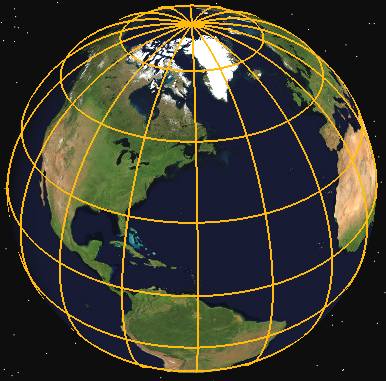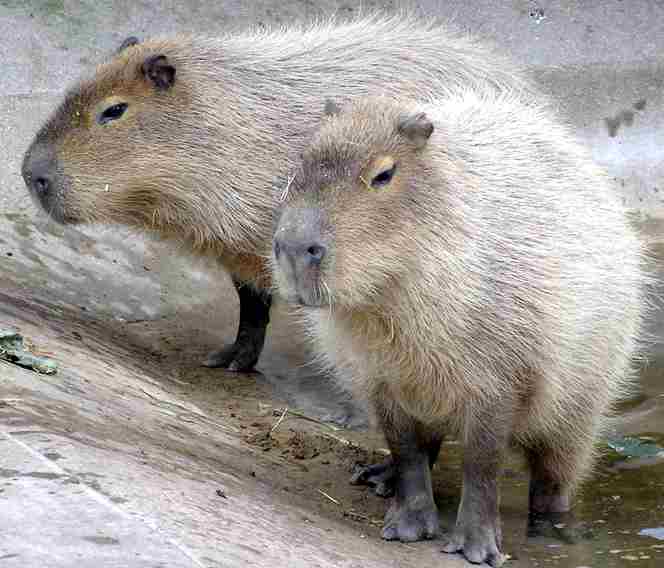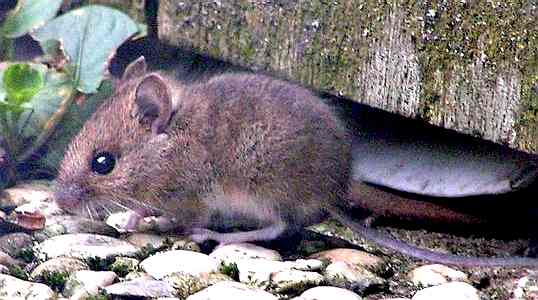|
RODENTS
|
|||||||||||||||||||||||||||||||||||||||||||||||||||||
|
Rodentia is an order of mammals (Mammalia). Members of the order Rodentia are called rodents.
In terms of number of species — although not necessarily in terms of number of organisms (population) or biomass — rodents make up the largest order of mammals, with over 40 percent of mammalian species belonging to the order. Their success is probably due to their small size, short breeding cycle, and ability to gnaw and eat a wide variety of foods.
There are between 2000 and 3000 species of rodents, which are found in vast numbers on all continents except Antarctica, most islands, and in all habitats except for oceans. They are the only placental order other than bats (Chiroptera) to reach Australia without human introduction.
Capybara, the largest living rodent Characteristics
Most rodents are small; the tiny African pygmy mouse is only 6 cm in length and 7 grams in weight. On the other hand, the capybara can weigh up to 45 kg (100 pounds) and the extinct Phoberomys pattersoni is believed to have weighed 700 kg.
Rodents have two incisors in the upper as well as in the lower jaw which grow continuously and must be kept worn down by gnawing; this is the origin of the name, from the Latin rodere, to gnaw, and dens, dentis, tooth. These teeth are used for cutting wood, biting through the skin of fruit, or for defense. The teeth have enamel on the outside and exposed dentine on the inside, so they self-sharpen during gnawing. Rodents lack canines, and have a space between their incisors and premolars. Nearly all rodents feed on plants, seeds in particular, but there are a few exceptions which eat insects or even fish.
Rodents are important in many ecosystems because they reproduce rapidly, and can function as food sources for predators, mechanisms for seed dispersal, and as disease vectors. Humans use rodents as a source of fur, as model organisms in animal testing, for food, and even in detecting landmines.
Members of non-rodent orders such as Chiroptera (bats), Scandentia (treeshrews), Insectivora (moles, shrews and hedgehogs), Lagomorpha (hares, rabbits and pikas) and mustelid carnivores such as weasels and mink are sometimes confused for rodents. Rodents have a carrier-immunity to rabies virus, making them immune to the potentially infectious and lethal disease. They are carriers for most other animal-to-human illnesses, however, and still should not be agitated.
Natural history
The fossil
record of rodents began after the extinction of the dinosaurs 65
million years ago. By the end of the Eocene epoch, beavers and
squirrels appeared in the fossil record. They originated in
Laurasia, the joined continents of North America, Europe, and
Asia. Some species colonized Africa, giving rise to the earliest
hystricognaths. From there they rafted to South America, an
isolated continent during the Oligocene and Miocene epochs. By
the Miocene, Africa collided with Asia, allowing rodents such as
porcupines to spread into Eurasia. During the Pliocene, rodent
fossils appeared in Australia. Even though marsupials are the
prominent mammals in Australia, rodents make up almost 25% of
the mammals on the continent. Meanwhile, the Americas became
joined and some rodents expanded into new territory; mice headed
south and porcupines headed north.
Wood Mouse
Classification
The rodents are part of the clades: Glires (along with lagomorphs), Euarchontoglires (along with lagomorphs, primates, treeshrews, and colugos), and Boreoeutheria (along with most other placental mammals). The order Rodentia may be divided into suborders, infraorders, superfamilies and families.
Classification scheme: ORDER RODENTIA (from Latin, rodere, to gnaw)
Alternate classifications
The above taxonomy uses the shape of the lower jaw (sciurognath or hystricognath) as the primary character. This is the most commonly used approach for dividing the order into suborders. Many older references emphasize the zygomasseteric system (suborders Protrogomorpha, Sciuromorpha, Hystricomorpha, and Myomorpha).
Several molecular phylogenetic studies have used gene sequences to determine the relationships among rodents, but these studies are yet to produce a single consistent and well-supported taxonomy. Some clades have been consistently produced such as:
The positions of the Castoridae, Geomyoidea, Anomaluridae, and Pedetidae are still being debated.
LINKS and REFERENCES
RODENTS:
OTHER ANIMALS:
POPULAR MAMMALS:
BIRD INDEX:
POPULAR INSECTS:
John Storm and Kulo Luna $billion dollar whale When a pirate whaler kills a small humpback whale, a larger whale sinks the pirate ship to avenge the death, but is itself wounded. The pirates put a price on the whale's head, but an adventurer in an advanced solar powered boat races to beat the pirates and save the wounded animal.
This modern adventure story by Jameson Hunter is due to be released in 20 14
|
|||||||||||||||||||||||||||||||||||||||||||||||||||||
|
This website is copyright © 1991- 2013 Electrick Publications. All rights reserved. The bird logo and names Solar Navigator and Blueplanet Ecostar are trademarks ™. The Blueplanet vehicle configuration is registered ®. All other trademarks hereby acknowledged and please note that this project should not be confused with the Australian: 'World Solar Challenge'™which is a superb road vehicle endurance race from Darwin to Adelaide. Max Energy Limited is an educational charity working hard to promote world peace.
|
|||||||||||||||||||||||||||||||||||||||||||||||||||||
|
AUTOMOTIVE | BLUEPLANET BE3 | ELECTRIC CARS | ELECTRIC CYCLES | SOLAR CARS | SOLARNAVIGATOR |
|||||||||||||||||||||||||||||||||||||||||||||||||||||


